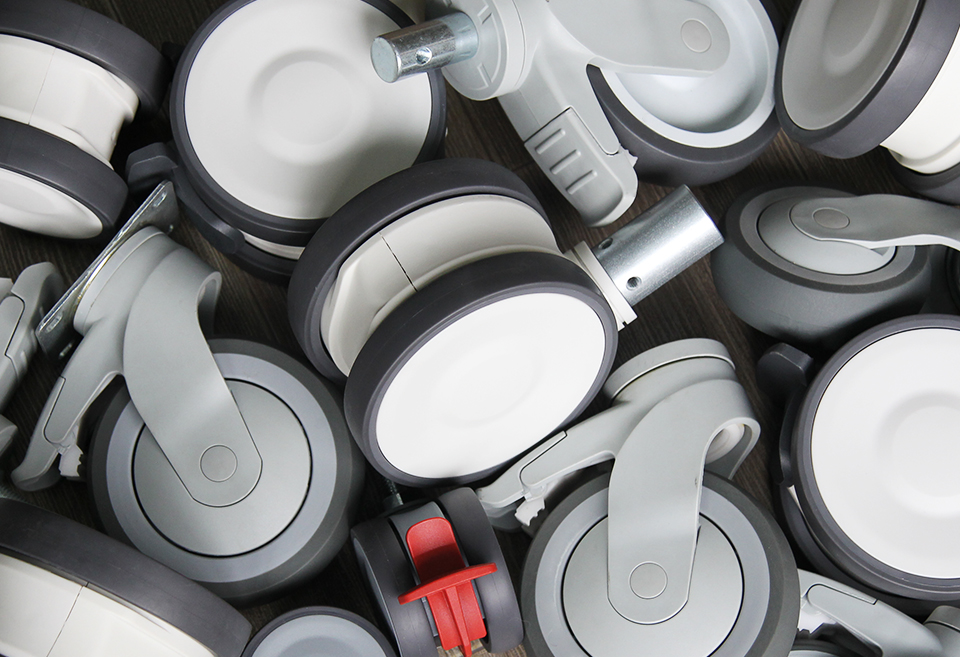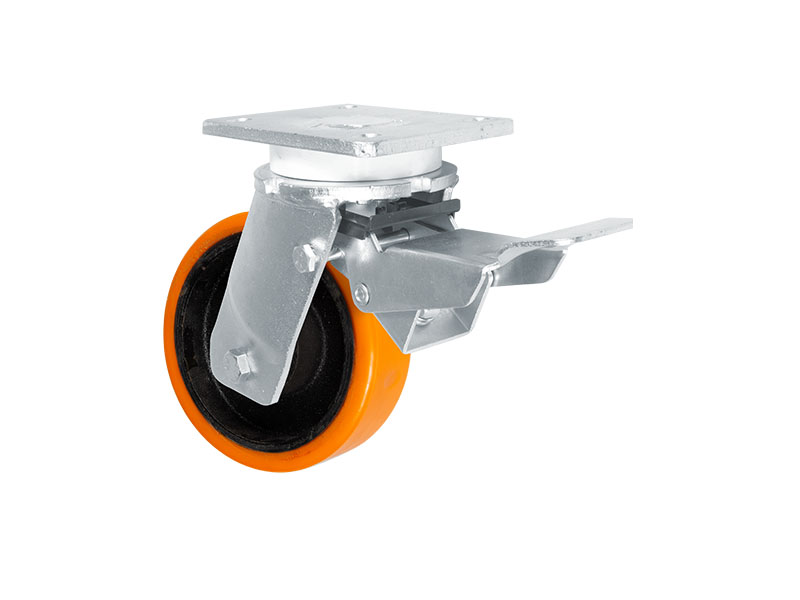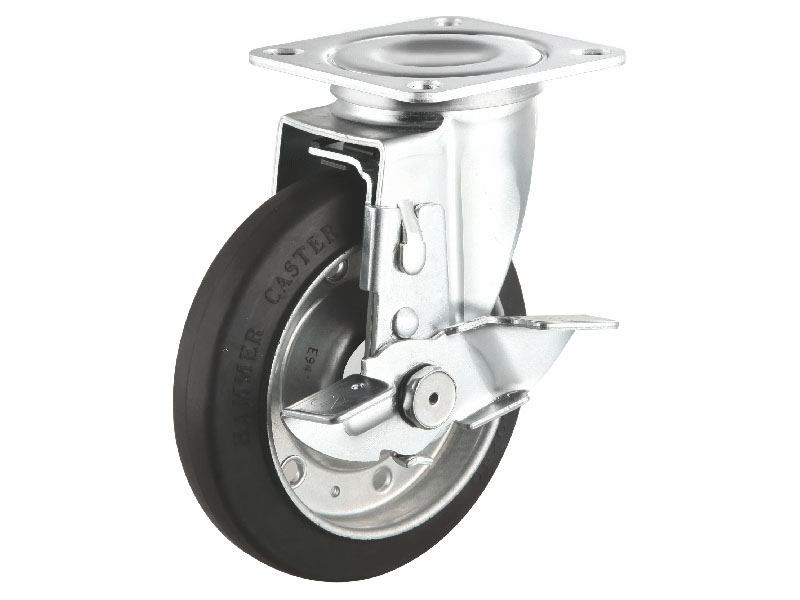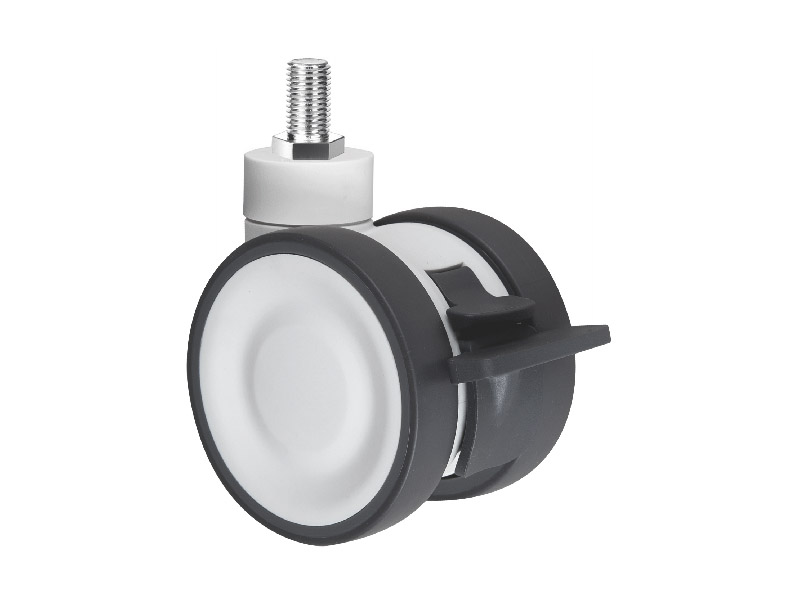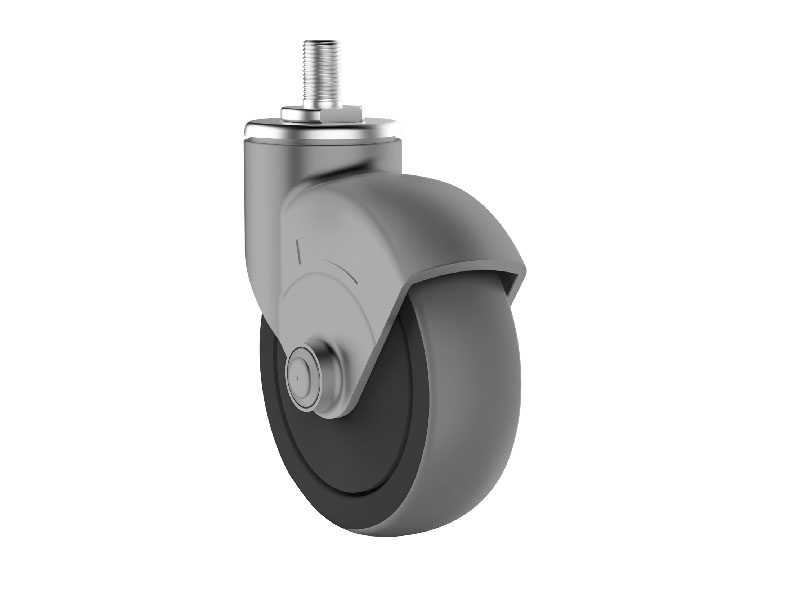Selecting the right high load capacity caster wheels is crucial for ensuring smooth, safe, and efficient operations in various industries. Whether you’re handling heavy equipment in a manufacturing facility, transporting materials in a warehouse, or moving patients in a healthcare setting, choosing the appropriate caster wheels can make a significant difference in productivity and safety. In this comprehensive guide, we’ll walk you through the essential factors to consider when selecting high load capacity caster wheels for your specific application.
Understanding Load Capacity
The first and most critical factor to consider when choosing caster wheels is the load capacity. Load capacity refers to the maximum weight that a caster wheel can safely support without failing or experiencing reduced performance. It’s essential to accurately determine the total weight of the load, including the weight of the equipment or object being transported, to ensure that the caster wheels can handle the required capacity.
When calculating the load capacity, consider the following:
- 1. The weight of the equipment or object being moved
- 2. The weight of any additional items or materials being transported
- 3. The number of caster wheels supporting the load
- 4. The distribution of weight across the caster wheels
Inford Caster offers a wide range of high load capacity caster wheels, with options available for various weight capacities. Our expert team can help you determine the appropriate load capacity for your specific application, ensuring optimal performance and safety.
Polyurethane Swivel Caster With Metal Total Brake
Wheel Material
The wheel material plays a significant role in the performance and durability of caster wheels, especially in high load capacity applications. Different materials offer unique properties and benefits, making them suitable for specific environments and applications. Some common wheel materials include:
- 1. Polyurethane: Polyurethane wheels provide excellent load-bearing capacity, durability, and shock absorption. They are resistant to oils, chemicals, and abrasions, making them suitable for various industrial applications.
- 2. Steel: Steel wheels are known for their exceptional strength and durability, making them ideal for extremely heavy loads and harsh environments. They can withstand high temperatures and are resistant to chemicals and solvents.
- 3. Nylon: Nylon wheels offer a combination of strength, durability, and quiet operation. They are resistant to most chemicals and solvents and can operate in a wide range of temperatures.
- 4. Rubber: Rubber wheels provide excellent traction and shock absorption, making them suitable for applications that require floor protection and noise reduction. They are available in various hardness levels to suit different load capacities and floor conditions.
Inford Caster provides a diverse selection of wheel materials to meet the unique requirements of different industries and applications. Our knowledgeable team can guide you in choosing the most suitable wheel material for your specific needs.
Bearing Type
The bearing type determines how smoothly and efficiently the caster wheel rotates under load. In high load capacity applications, selecting the appropriate bearing type is crucial for ensuring optimal performance and longevity. The most common bearing types include:
- 1. Roller Bearings: Roller bearings consist of cylindrical rollers that rotate between inner and outer races, providing excellent load distribution and smooth rotation. They are suitable for high load capacities and can withstand shock loads and impacts.
- 2. Ball Bearings: Ball bearings feature spherical balls that rotate between inner and outer races, offering low friction and smooth rotation. They are ideal for applications that require precise movement and easy maneuverability.
- 3. Tapered Roller Bearings: Tapered roller bearings have conical rollers that run between tapered inner and outer races, providing excellent thrust load capacity and durability. They are suitable for applications with high radial and thrust loads.
Inford Caster offers caster wheels with various bearing types to suit different load capacities and application requirements. Our experienced team can assist you in selecting the most appropriate bearing type for your specific needs, ensuring optimal performance and reliability.
Stem Caster With Two Pedal Brake
Mounting Options
The mounting options determine how the caster wheels are attached to the equipment or object being transported. Choosing the right mounting option is essential for ensuring secure attachment, stability, and ease of installation. Common mounting options include:
- 1. Plate Mount: Plate mount casters are attached to a flat plate that is bolted or welded to the equipment. They offer versatility and ease of installation, making them suitable for various applications.
- 2. Stem Mount: Stem mount casters feature a threaded stem that is inserted into a corresponding hole in the equipment. They provide a secure and stable attachment and are ideal for applications with limited space.
- 3. Bolt Hole Mount: Bolt hole mount casters have pre-drilled holes in the caster frame, allowing them to be bolted directly to the equipment. They offer a strong and secure attachment and are suitable for heavy-duty applications.
Inford Caster provides a range of mounting options to accommodate different equipment designs and installation requirements. Our knowledgeable team can help you select the most suitable mounting option for your specific application, ensuring a secure and stable attachment.
Swivel vs. Rigid Casters
Caster wheels can be classified as either swivel or rigid, depending on their ability to rotate. Choosing between swivel and rigid casters depends on the specific requirements of your application, such as maneuverability, stability, and load distribution.
- 1. Swivel Casters: Swivel casters allow the wheel to rotate 360 degrees around a vertical axis, providing excellent maneuverability and the ability to change direction easily. They are ideal for applications that require frequent turning and navigating in tight spaces.
- 2. Rigid Casters: Rigid casters have a fixed wheel orientation and do not swivel. They provide straight-line stability and are suitable for applications that require heavy loads to be transported in a straight line.
In many cases, a combination of swivel and rigid casters is used to achieve the desired balance between maneuverability and stability. Inford Caster offers both swivel and rigid caster options to meet the specific needs of your application.
Conclusion
Selecting the right high load capacity caster wheels is essential for ensuring safe, efficient, and reliable operations in various industries. By considering factors such as load capacity, wheel material, bearing type, mounting options, and swivel vs. rigid design, you can choose the most suitable caster wheels for your specific application.
Inford Caster, a leading manufacturer and supplier of high-quality caster wheels, offers a comprehensive range of solutions for high load capacity applications. With our extensive expertise and commitment to customer satisfaction, we can help you find the perfect caster wheels to meet your unique requirements.
For more information on our high load capacity caster wheels and to discuss your specific needs, please visit our website at https://www.infordcaster.com/ or contact our knowledgeable team today.

